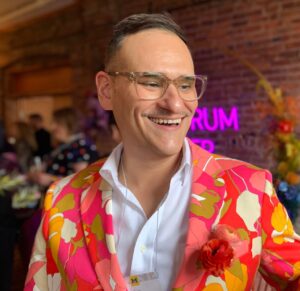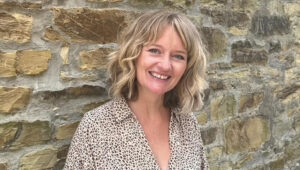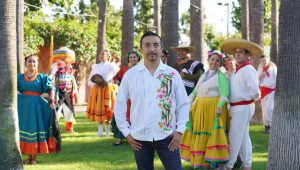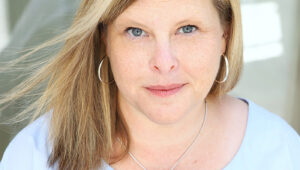
At the UM Museum of Art, we launched the Vote 2022: Midterms Matter project at the end of September. As part of UMMA’s new 5-year strategic plan, we’re committed to making the museum a dynamic space for civic life and shared experiences. The Vote 2022 project ties directly to this goal by devoting several galleries and other spaces in the museum to the creation of a fully functional Ann Arbor City Clerk’s Office where local voters can register to vote, receive an absentee ballot, and cast their ballot early. During the 2020 US Presidential Election, we registered over 5,000 voters and over 8,000 ballots were cast at the museum. The voting site is designed by two UM Art & Design faculty collaborators, Stephanie Rowden and Hannah Smotrich, who have applied research and design principles to create a beautiful, easy, and welcoming voting experience, especially for first time voters. I’m so inspired by how they’ve transformed a highly bureaucratic process into a beautiful work of art. Alongside the voting center, I’m collaborating with DC-based social practice artist Philippa Pham Hughes who has worked on a national level to construct artful and humane social experiences across the political divide. On November 3, we’ll host “Hey, We Need To Talk,” a dinner experience for 120 people at the Museum constructed to bring conservatives, liberals, and everyone in between together for an evening of conversation about what it means to be an American right now. One of the most challenging aspects of this project is recruiting conservative folks to join the event – most are suspicious of our motives and express discomfort about coming to the museum. Philippa and have been working on a grassroots level, person to person, to build trust that will hopefully lead to participation. The goal of this work is to fight political polarization in our very purple swing state.
Among several very important DEI-related initiatives underway at the Museum, I’m working closely on a pilot program with paid gallery educators to evolve our K-12 teaching practices towards anti-racist, inclusive, and child-centered pedagogies. The seed for this work was planted during the pandemic when my colleague Grace VanderVliet and I led our volunteer docents through a yearlong zoom workshop on anti-racism and teaching in the museum. Most of our volunteer docents fit the profile that you might imagine – enthusiastic, educated, retired white women who have the time and financial resources to volunteer – and, like many museums, we know that we need to diversify who gets to teach here and the ways that teaching happens. We received a grant from the Community Foundation for Southeast Michigan to jumpstart this work, and formed a partnership with the UM School of Education to support the development of training and curriculum which we hope can be shared as a model for other art museums. As UMMA evolves, we are being transparent about our colonialist histories, and we’re creating more exhibitions and programs that directly address potent and important social issues. Alongside that, we’re working to build a group of educators who can be responsive to these changes and teach towards social justice and change.
How can the NAS community learn more about the work you do?
You can learn about some of this work here:
Philippa Hughes: www.heyweneedtotalk.com
Vote 2022 Project: https://umma.umich.edu/exhibitions/2022/vote-2022-midterms-matter
UMMA Strategic Plan: https://umma.umich.edu/strategic-plan
Jim’s LinkedIn: https://www.linkedin.com/in/jimleija/
You recently sat on a committee, made up of members of this community, tasked with co-designing NAS’ next program for arts and culture leaders. What was that experience like?
It was an honor to be invited to the co-design process for NAS’s next wave of leadership programs. I’m always so impressed by the care that the NAS staff takes in building process-oriented experiences, and this process was no exception. I appreciated the opportunity to reflect on NAS’s design principles and suggest changes for future planning; this led to a series of conversations on what we hope to move away from and move toward as a field. There was quite a lot of discussion around what it means to break down hierarchical models of leadership and create training experiences that engage teams of people rather than singular leaders. Additionally, we talked about how to embrace a range of expertises in a new program – not only those expertises recognized by traditional educational and professional systems. All in all very inspiring, and I’m looking forward to seeing how the programs evolve.
You also joined us and so many other members of the NAS community for our Homecoming retreat weekend. How was it?
I felt so reenergized by the NAS Homecoming event; it was the first time since the pandemic that I’ve attended a large professional gathering and I was so happy I did. I walked away feeling very lucky to be connected to such a dynamic, thoughtful, and caring group of arts professionals who are committed to changing our field for the better. The NAS network is strong, and we’re all challenging the notion of what leadership looks like. I also want to give a shout out to the planning team and NAS staff who created the perfect balance of professional learning, networking, reflection, interactivity, and FUN!


